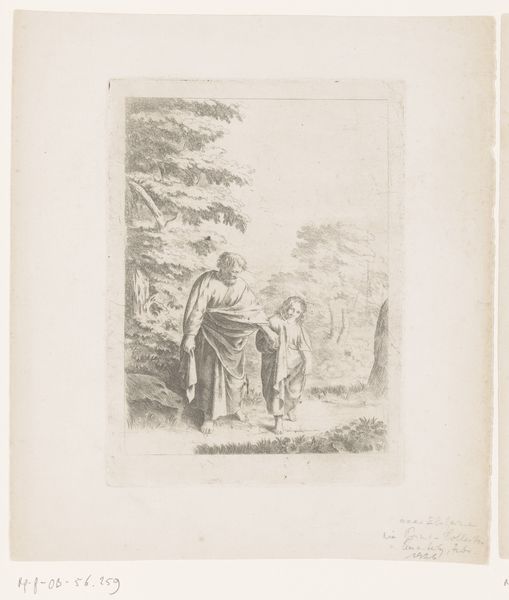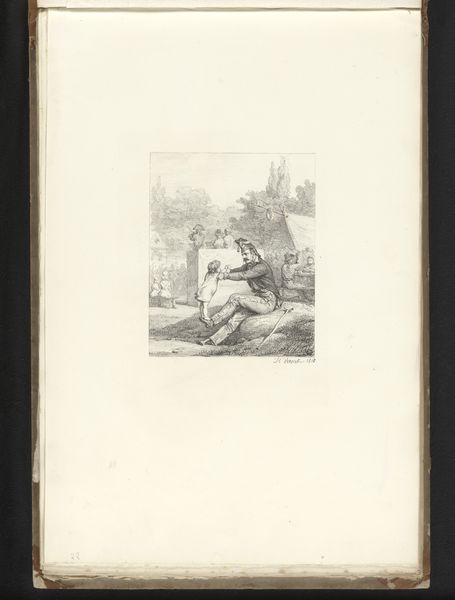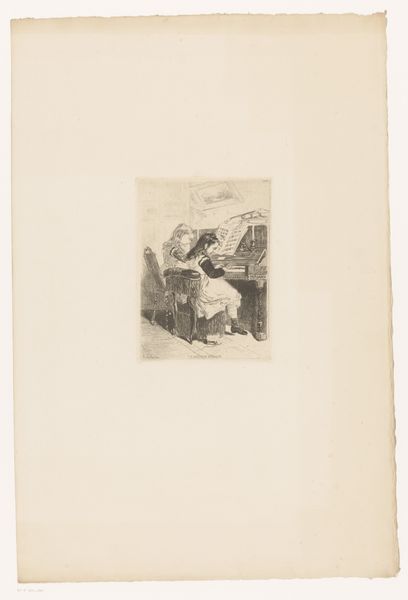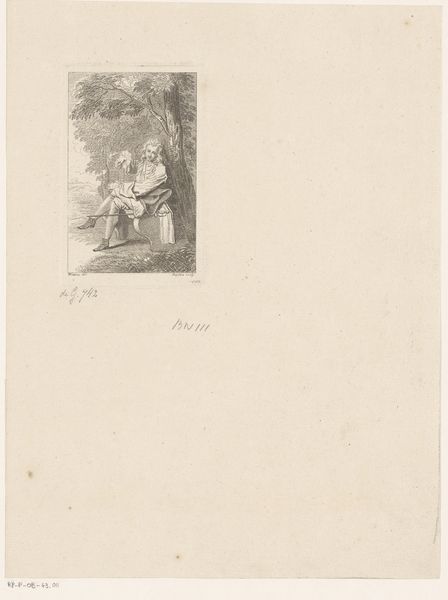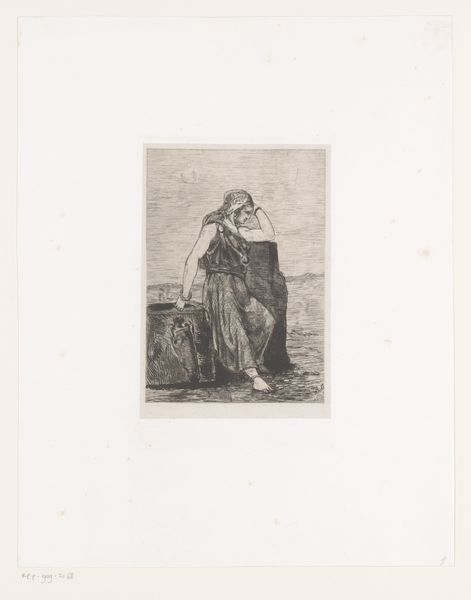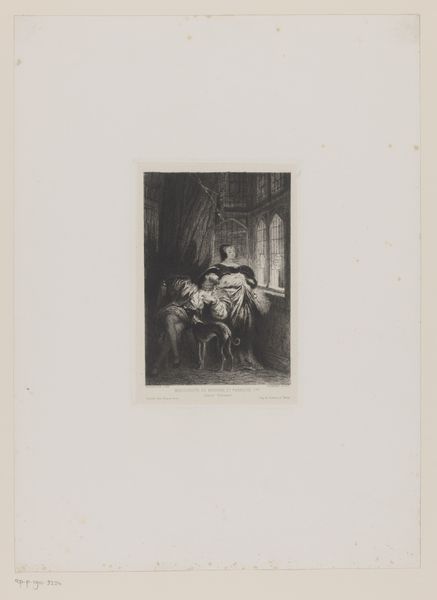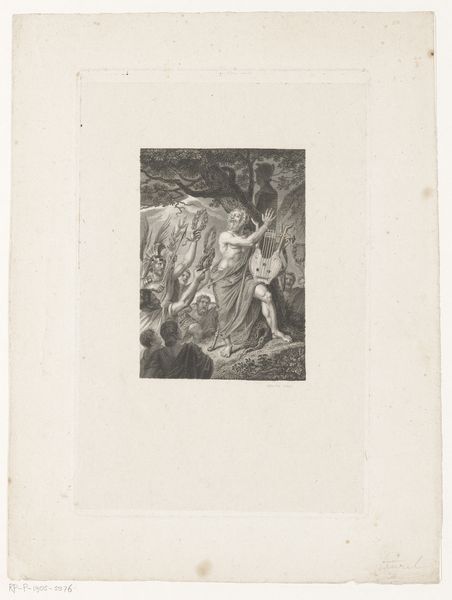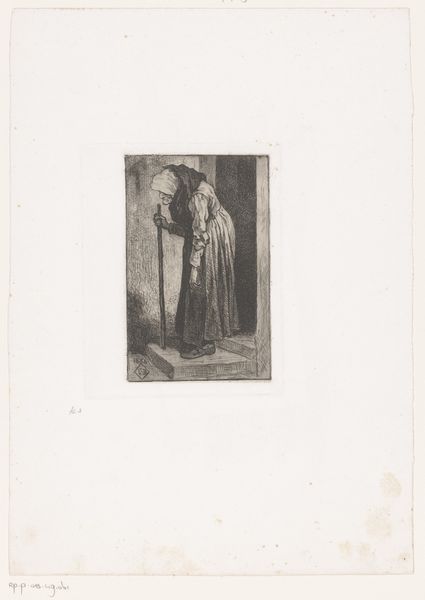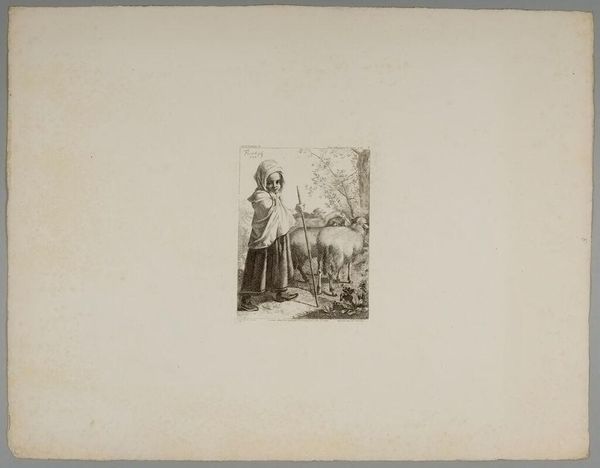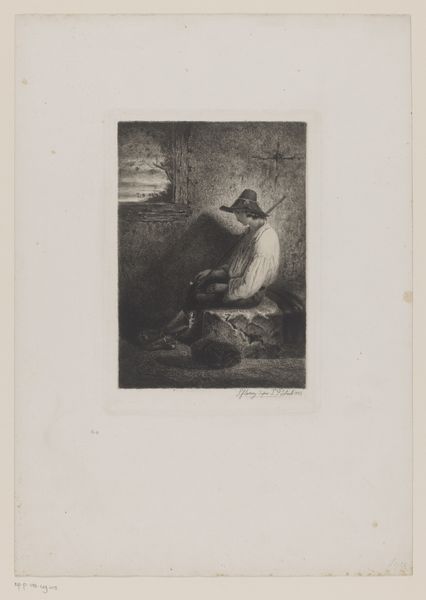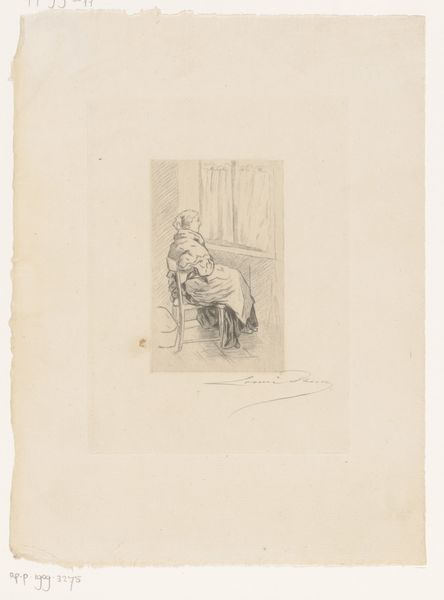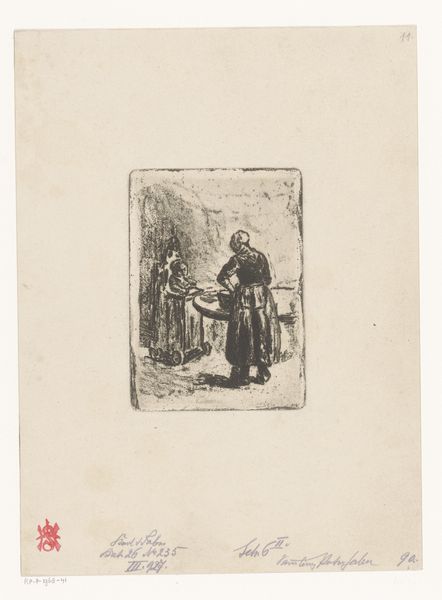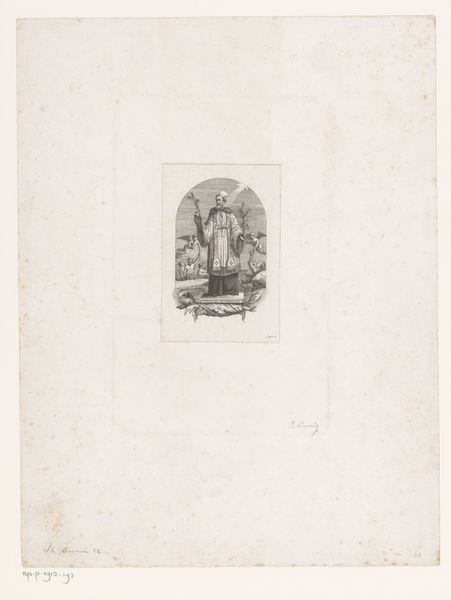
Dimensions: height 172 mm, width 130 mm
Copyright: Rijks Museum: Open Domain
Curator: Today we're looking at an etching by Alfred Alexandre Delauney, created sometime between 1840 and 1886. It's titled "Herder met hond tegen een rots leunend," which translates to "Shepherd with dog leaning against a rock." Editor: It’s a fairly small, monochrome image, dominated by deep shadows and very fine, detailed lines. The mood is rather melancholy, or at least contemplative. Curator: Yes, Delauney captures the solitary life of a shepherd and his dog. It's fascinating how the landscape, rendered in such detail, serves as a reflection of the shepherd’s own inner state. Consider how the Romantic movement idealized nature as a space for reflection and connection to something larger than oneself. Editor: Absolutely. The lines that form the man's cloak, the dog's fur, and the foliage create a sense of depth. There’s an interesting use of contrast, pushing the foreground figures out and giving dimension to the otherwise flat picture plane. The artist is a master of creating light with so few elements. Curator: The choice of medium also plays a significant role. Etching, with its ability to produce fine lines and subtle gradations, allows for an intimate portrayal of both the human and natural world, connecting the working class and their relationship with their natural world and its solitude. We can also read it through the lens of class, representing the working classes who had the least amount of control over the use of natural resources. Editor: Perhaps, though I still find myself drawn back to the more immediate elements—the shepherd's stoic pose, the dog’s alert attentiveness, the soft way light seems to rest on the hilltop in the background. These artistic elements speak volumes before considering the wider context. Curator: It's precisely those intimate, sensory details that give access to a richer understanding. By situating them in a social framework, we reveal deeper resonances about individual experience, access to the natural world, and their socioeconomic reality. Editor: I can certainly appreciate the sociohistorical reading of the piece. For me, it's just equally fascinating how Delauney manipulates these raw materials of line and shadow to conjure a complete visual experience. Curator: Thank you, those formal elements open onto wider discussions and contextual perspectives. It allows us a deeper understanding of our shared past, present, and future.
Comments
No comments
Be the first to comment and join the conversation on the ultimate creative platform.
